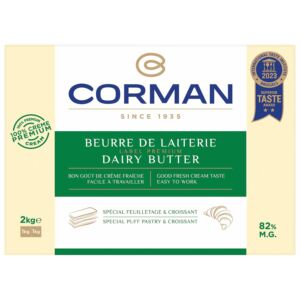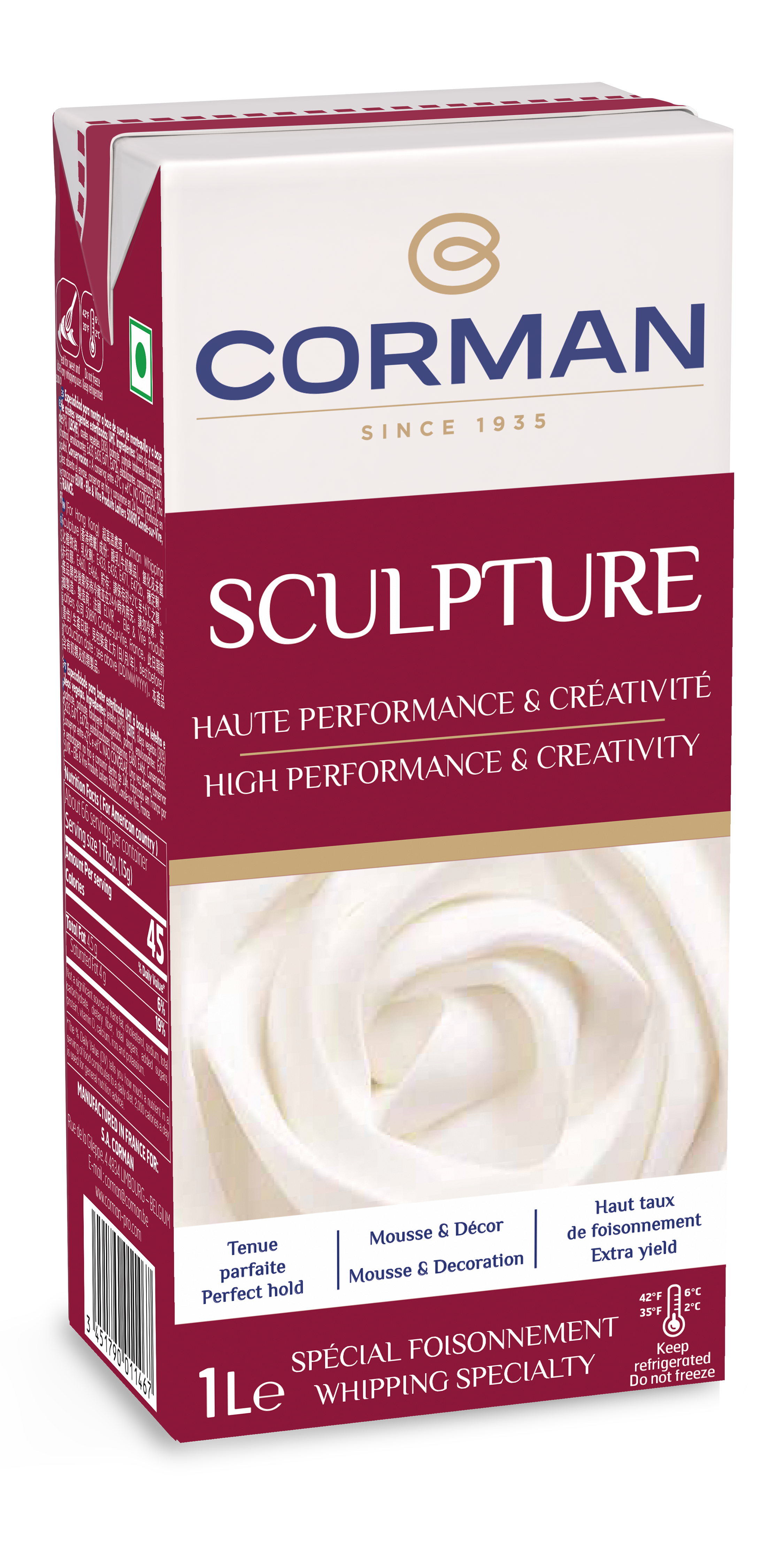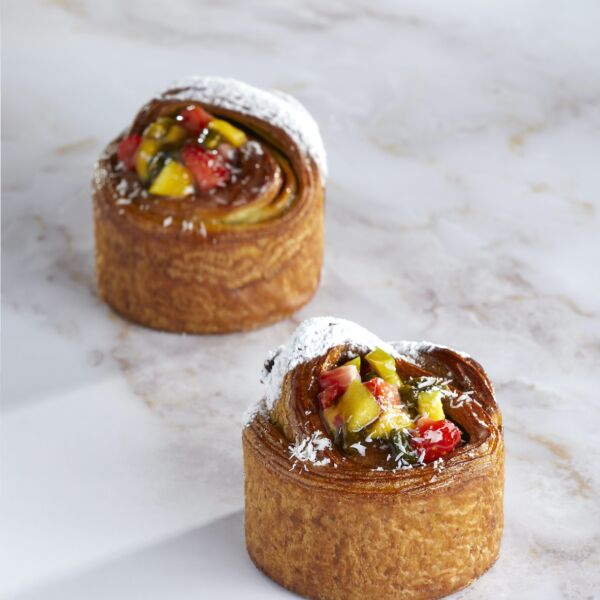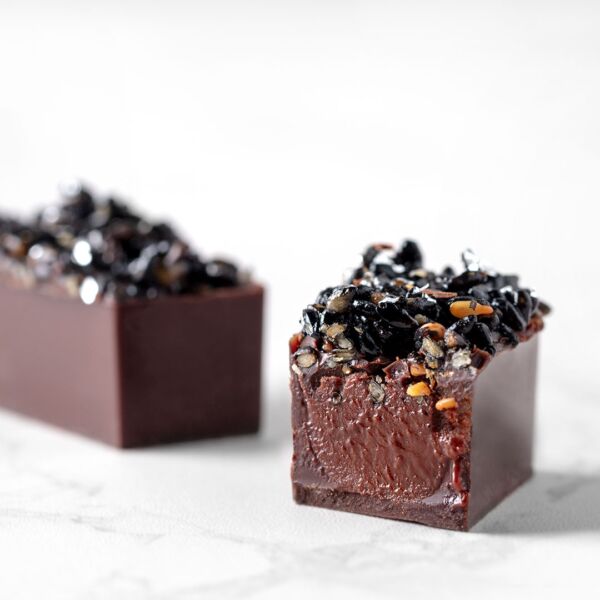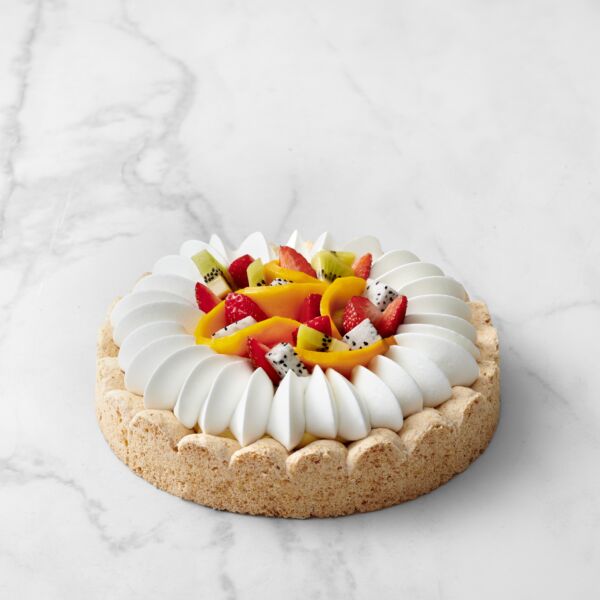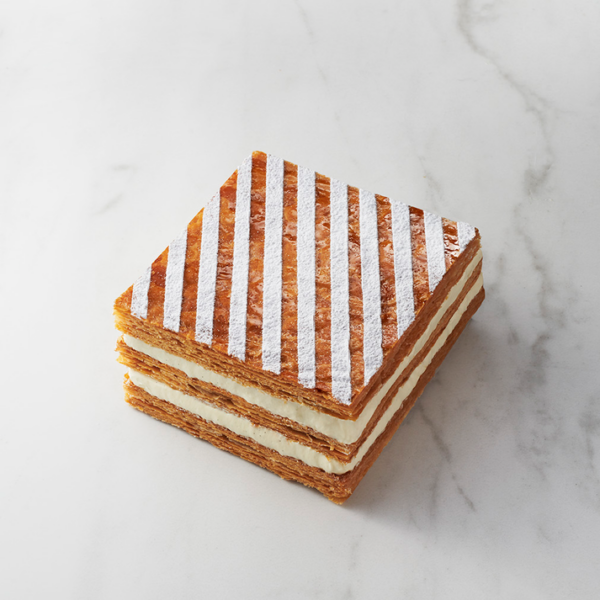- Baker-Pastry Chef
90th Anniversary Pastry
- Recipe calculated for 63 pieces
- 5 completion stages

CROISSANT DOUGH
·
Dissolve the yeast in cold milk. Mix the
flour, sugars, and dissolved yeast, then add the salt. Mix at the
first speed for 5 minutes.
·
Add the butter and knead for about 8
minutes at the second speed to obtain a homogeneous dough at 24 °C. Cover with
plastic film and let rest for 10 minutes.
·
Roll out the dough into a rectangle of
40 x 60 cm, cover with plastic film, and place in the freezer for 30 minutes to
cool the dough as quickly as possible.
·
Temper the butter sheet to 15 °C and
roll it out to a thickness of 8 mm. Place it on the dough and give 2 double
turns.
·
Leave to rest, covered, for 30 minutes
in the refrigerator.
·
Roll out the dough to a thickness of 2.6
mm.
ARRANGEMENT IN CRUFFIN SHAPE
•
Cut the dough into strips measuring 3 cm
x 13 cm x 2.6 mm thick.
•
Then roll into a rose shape: Stack 3
strips with a 4 cm offset. Lightly moisten with a fine mist of water if they
are too dry. They should stick slightly to better develop during baking. Now
roll from the thinnest end to the end and tuck the three ends of the dough
strips under the pastry. Roll lightly between both hands. From above, you
should now see a rose shape.
•
Let rise in aluminium moulds or rings
that are 4 cm high and 7 cm in diameter. If using aluminium moulds, place them
on corrugated cardboard to keep them in good condition, and pierce a few holes
in the bottom using a thermometer needle. These holes allow yeast gases to
escape, ensuring the shape is filled to the bottom. Then, place the aluminium moulds
on a perforated tray. After baking, you can reuse them for the next bake. It is
usually not necessary to grease the moulds when you can unmould the cruffins
while hot. However, lightly greasing can make the process easier. If using
rings, place them on a Silpain mat and on a perforated tray. When the dough is
in the moulds, press down with a damp finger in the centre of the dough to
create a rose with an imprint in the middle. This helps them rise better and
maintain a nicer shape during and after baking.
•
Bake at 175 °C for 15 to 16 minutes
until golden on top. Open the steam vent after 1/3 of the baking time.
•
Allow the pastries to cool completely
before filling them.
SPARKLING PRALINE STICKS
Recipe for 9 tubes of 50 cm = 63 sticks
of 7 cm
·
Temper the white chocolate and add the
sparkling sugar. Then incorporate the almond praline.
·
Line the inside of a plastic tube with a
diameter of 1 cm with baking paper. Pipe the mixture into the tube using a
piping bag.
·
Allow to harden, remove the plastic
tubes, and cut to the desired length of 7 cm.
Unused sticks can be stored in the freezer in a tightly sealed plastic container. Before use, take them out of the freezer and let them thaw in the refrigerator. Then, allow them to come to room temperature. Ensure that all steps are always performed in a closed container.
CHAMPAGNE MOUSSE
•
Heat the champagne
with the sugar to 55 °C and add the gelatine mass. Mix well and let cool to 32 °C.
•
Add the gold powder
and mix.
•
Whip the Sculpture
well and incorporate it, in two parts, into the mass.
•
Fill the centre of
the pastries with about 30 g of mousse through a hole on the top. Use a piping
bag with a small round nozzle of 5 mm.
FINISHING
·
Insert a sparkling
praline stick into the hole at the centre of each pastry just before serving.
·
To finish,
optionally sprinkle the pastries with decorating sugar to accentuate the
stripes.

 International
International  Deutschland
Deutschland  Belgique
Belgique  España
España  Italia
Italia 
